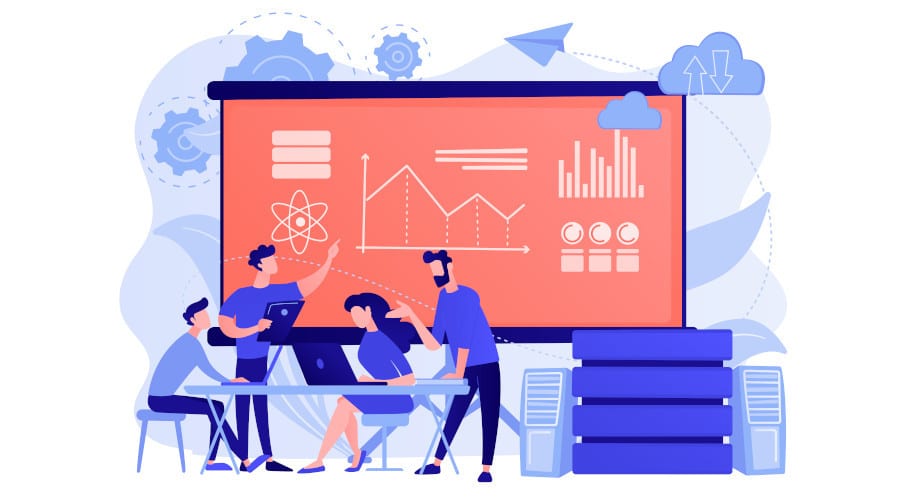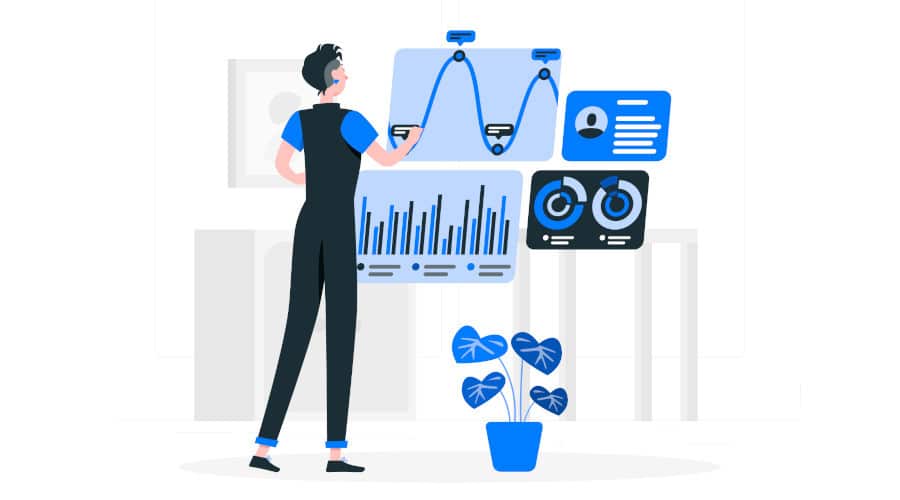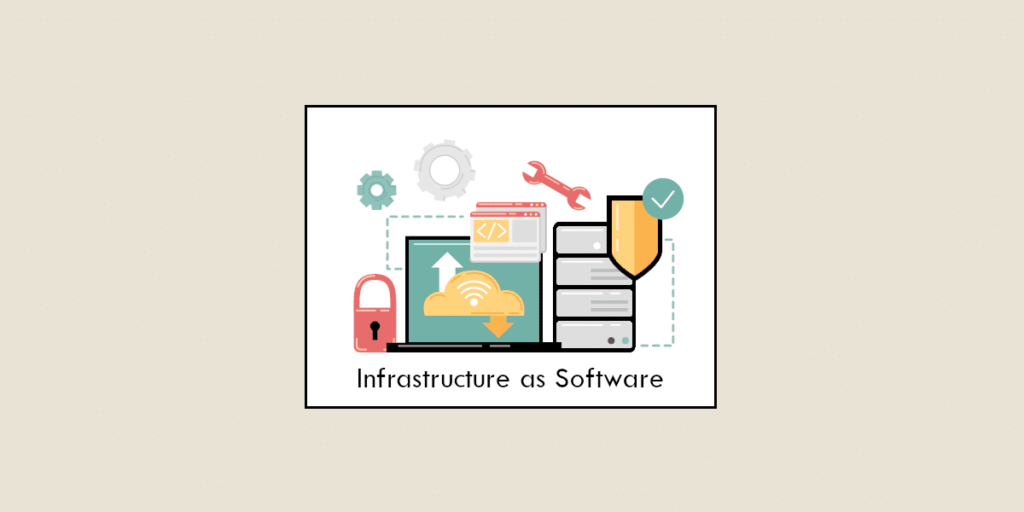Infrastructure as Software (IaS) is a new approach to managing IT infrastructure as software. Discover its origins, principles, technologies and many advantages!
In the digital age, efficiency and flexibility are undeniable assets for businesses and organizations of all sizes.
To meet this need, a new IT infrastructure management model has revolutionized the way hardware and software resources are managed, provisioned and orchestrated: Infrastructure as Software (IaS).
What is IaS?
This new approach to IT resource management involves treating the entire infrastructure (servers, storage, networks, etc.) as computer code. To enable infrastructure resources to be described, deployed and managed in a programmable way, while automating operational tasks.
IaS has its roots in the growing need to make IT infrastructures more flexible, responsive and scalable. Its origins are linked to software development practices and DevOps methodology.
Over time, IaS has evolved to include concepts such as orchestration, virtualization, containers, and its close integration with Cloud Computing.
It is precisely this evolution that has paved the way for more dynamic, cost-effective solutions for managing IT infrastructure.
The promise of this approach is to enable infrastructure to be treated like any other software, giving it unprecedented agility, automation and scalability.
Key concepts of Infrastructure as Software
To fully understand the potential of IaS, the first step is to familiarize ourselves with the key concepts that underpin it.
These principles lie at the heart of the transformation of infrastructure as software. This means that every infrastructure component, whether servers, networks or storage, can be controlled and managed using code.
Engineers and developers can describe the entire desired infrastructure in a specific programming language, enabling precise, reproducible configuration.
Another key element is automation. All repetitive and time-consuming tasks can be automated. This includes server provisioning, software update management and demand-driven resource management.
Orchestration, on the other hand, involves the intelligent coordination and management of these automated tasks to optimize infrastructure performance and efficiency.
IaS also offers a variety of deployment and management models tailored to the specific needs of each organization. These include on-premises solutions, infrastructure managed by public cloud providers, and hybrid deployments combining the two.
Each of these models has its advantages and disadvantages in terms of cost, performance and flexibility. So teams can select the most suitable one for each project!

Infrastructure as Software tools
This modern approach to infrastructure relies on a wide range of technologies and tools to manage, provision and automate.
Solutions such as Terraform and Ansible enable infrastructure to be described in code and automate deployment and configuration.
The Kubernetes container orchestration platform makes it possible to manage and scale containerized applications created using a tool like Docker.
In addition, virtualization technologies such as VMware vSphere or Microsoft Hyper-V are used to create and manage virtual machines.
For automation, the Jenkins continuous integration server can be used to automate deployment and testing. CI/CD solutions such as GitLab automate the build, test and deployment process.
Management solutions like Chef and Puppet are very useful for defining the desired state of an infrastructure in order to configure or deploy it.
Cloud computing platforms such as AWS, Azure and Google Cloud Platform also play a central role, offering a wide range of infrastructure services.
In addition, the Cloud provides access to Infrastructure as Code (IaC) services such as CloudFormation (AWS) or Azure Ressource Manager (ARM).
What are the advantages?
The adoption of IaS brings a series of significant benefits to businesses and organizations looking to modernize their IT infrastructure and remain competitive in the marketplace.
First and foremost, it offers unrivalled flexibility in the management of IT resources. Teams can quickly create, modify or delete resources according to business needs. This makes them more agile in adapting to market changes and fluctuations in demand.
What’s more, the increased automation and operational efficiency of IaS translates into significant cost savings. Companies can provision resources more accurately, avoiding the unnecessary expense of over-provisioning.
As the use of cloud infrastructures is based on demand, this approach also means paying only for what is consumed.
It also saves valuable time, as the deployment of new infrastructures or software updates can be carried out in minutes rather than weeks.
This speeds up the product and service development process, giving the company a competitive edge.
IaS also centralizes infrastructure management, enabling IT teams to oversee the entire system from a single interface.
This facilitates monitoring, maintenance and troubleshooting, and ensures greater consistency in the IT environment.

What's it for? Main use cases
Because of its many advantages, IaS is used by businesses for a multitude of applications and concrete use cases.
The most common usage is Infrastructure as Code (IaC). This involves describing the entire infrastructure, including servers, networks and databases, in code form.
Development teams can then version, test and deploy this infrastructure in a consistent way. Tools such as Terraform and Ansible are typically used to implement IaC.
IaS also plays a key role in the management of containers, such as those created with Docker. These containers enable an application and its dependencies to be packaged in an isolated environment, and IaS is used to orchestrate them on a large scale using solutions such as Kubernetes.
For their part, cloud providers such as Amazon Web Services (AWS), Microsoft Azure and Google Cloud Platform (GCP) use IaS to offer flexible cloud services.
Users can provision cloud resources on demand, manage their configuration using scripts, and benefit from automation to meet the changing needs of their applications.
What’s more, IaS is also playing a growing role in Edge Computing, where IT resources are deployed closer to end users.
These distributed resources can be managed more efficiently, guaranteeing optimum performance for real-time applications such as the Internet of Things (IoT) or autonomous vehicles.
The role of IaS in Data Science
Infrastructure as Software is widely used in Data Science, as it provides the resources needed to manage and analyze large quantities of data efficiently and scalably.
In particular, teams use it to rapidly provision IT resources to meet the specific needs of their projects. This includes servers, computing clusters or databases. This reduces the waiting time for access to the computing power required.
IaS also makes it easy to add computing resources on demand. This horizontal scalability is particularly important in the field of data science, where processing large quantities of data can require considerable computing power. The infrastructure can scale with the workload.
IaS technologies such as Docker and Kubernetes are also commonly used in Data Science to create, deploy and manage container environments. These enable development, execution and data analysis environments to be isolated, simplifying the management of software dependencies.
IaS also encourages the use of IaC to describe the entire infrastructure in reproducible code form. Data Science teams can therefore define their data processing infrastructure as code. Again, this facilitates management, version tracking and infrastructure deployment.
In addition, IaS also encompasses cloud storage services. Data scientists can store their large datasets in cloud storage systems such as Amazon S3, Google Cloud Storage or Azure Blob Storage. These services offer high storage capacity and adequate scalability to meet data needs.
Automation, meanwhile, can be used for tasks such as data ingestion and preparation, running machine learning models and generating reports. This is a valuable asset when it comes to protecting the sensitive data used in projects.

Conclusion: IaS, IT infrastructure in the age of the Cloud and Big Data
By enabling every component of the IT infrastructure to be managed using code, IaS offers a massive gain in agility and scalability. In the future, technologies such as artificial intelligence will continue to amplify automation and optimization capabilities.
That’s why it’s the ideal approach for meeting modern digital constraints, particularly in the field of Data Science!
To learn how to master IaS and become a Cloud expert, turn to DataScientest. Our online training courses are the ideal way to master these new technologies.
If you decide to take the Data Engineer course, you can learn how to handle containerization tools such as Docker and Kubernetes, and obtain Microsoft Azure certification.
Similarly, our DevOps Engineer course covers Docker and Kubernetes through the CI/CD module, as well as automation tools such as Ansible and DevOps. You’ll also learn how to use the AWS cloud and its DevOps services, and receive AWS Solutions Architect certification.
Another option is the Systems, Networks and Cloud Administrator curriculum, with a scripting and automation module covering Ansible, Python and Powershell. Here too, you can earn AWS Solutions Architect or AWS Certified SysOps Administrator certification.
If you’re just interested in learning about AWS or Microsoft Azure, you can also opt for our certification programs, which last just 4 or 5 days.
All our training courses are entirely distance learning, and our state-recognized organization is eligible for funding options. Without further ado, discover DataScientest!










